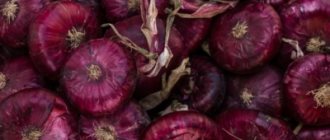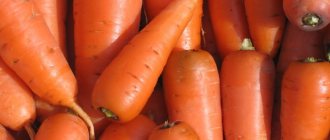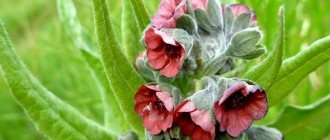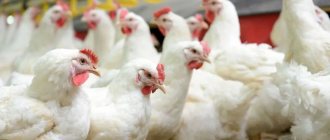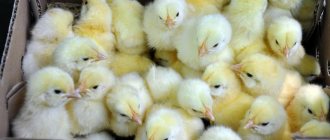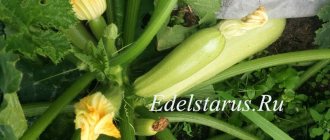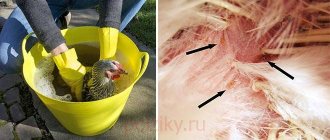The mid-season onion variety “Red Baron” (“Red Baron”) was bred by breeders of the seed company Bejo Zaden BV (Netherlands). It is famous for the marketability and taste of the bulbs in Europe and in post-Soviet countries - included in the State Registers of Russia (in 1997) and Belarus (in 2006). It belongs to the semi-sharp type and is considered universal: both green feathers and juicy heads are used for food, which are perfect for fresh consumption, all processing options and long-term storage.
The universal onion “Red Baron” (pictured) is grown mainly in an annual crop from seeds, as well as using sets or seedlings
"Red Baron" is adapted to various climatic conditions and soil types. It is recommended for cultivation throughout Belarus, in five regions of Russia: Central, Volga-Vyatka, Central Black Earth, North Caucasus and Ural. Intended for cultivation on subsidiary plots of land and in large farms, as it is suitable for commercial production with mechanized harvesting.
Description of the variety
The culture matures in approximately 90-100 days. The root system is strong and develops well, thanks to which this onion can grow successfully even during drought. The onion grows weighing 50-150 g, maximum weight is 200 g. The onion has a round shape, slightly flattened in the area of the tail and rhizome. The color of the onion is burgundy with a purple tint. The scales are dense, red-violet, and fit tightly to the head, which helps the onion to be stored much longer.
Onion color is burgundy with a purple tint
The feathers of Red Baron onions are dark green, with a slight waxy coating. The taste of the bulb and feathers is without bitterness, slightly spicy. Dry matter content: 13.3%.
Beneficial features
According to reviews, Red Baron onions are superior to varieties of regular onions in their benefits. The peculiar color is formed due to the presence of anthocyanins, which protect the body's cells from damage by radicals. Onions significantly improve immunity and create immunity to a number of diseases. Red onions, in addition to their beneficial properties, may also have harmful properties.
Onions contain certain substances that alleviate the condition of patients with diabetes. The vegetable is suitable for patients who suffer from salt deposition, by reducing inflammation and increasing diuresis. Onion gruel and a decoction of superficial scales treat sprains and swelling. Thanks to compresses, they relieve pain and inflammatory symptoms.
On the recommendation of doctors, you can use onions to treat hippoacid gastritis. Consuming Red Baron before meals increases acidity. Red onions contain a large amount of:
- potassium (to improve the condition of the nervous system);
- chromium (blood sugar regulation);
- sulfur (lowering blood cholesterol, reducing the growth of cancer cells).
By consuming about 3 onions in 7 days, you can slow down the oncological processes. Red onion is successfully used to reduce excess weight, improve memory, normalize the functioning of the heart muscles, and relieve stress. Warts are treated with onion rub. In order to prevent the development of colds, a small amount of raw vegetable is consumed daily.
Japanese scientists have established the effective effect of sulfur contained in red onions on slowing down the process of age-related aging of brain cells and reducing sclerotic manifestations.
Characteristics of Red Baron onion
Also check out these articles
- What is hydroponics?
- Growing onion
- Proper planting of currants by cuttings in spring and autumn
- How to care for turkeys
The Red Baron onion variety is popular among farmers. Not only does it grow quickly, but it also has a pleasant taste. What characteristics does it have?
- Short ripening period.
- Unpretentiousness to the soil.
- Resistance to diseases (downy mildew, root rot, fusarium) and pest attacks.
- Commercial quality and transportability.
Red Baron onion feathers are dark green, with a slight waxy coating
- Productivity per square planting is up to 3 kg. From 500 g of sets you get an average of 10-15 kg of large heads.
- Onions are stored well until spring, without loss of taste.
Interesting!
The main disadvantage of the variety is that you have to buy seeds every year, because it is very difficult to grow them.
Features of sowing onion seeds
The planting bed is prepared in advance. It is best to choose a place where there is a lot of light and the ground is not swampy. During digging, peat is added to the soil. Approximately 2 buckets of peat are needed per square meter. You can also add a glass of wood ash and half a bucket of humus. Fertilizer is applied to the site 2 weeks before planting seedlings or sowing seeds.
Planting is carried out with seeds or sets. Sets are grown from seeds in the first year. And in the second year it is planted to produce large onions. However, in the southern regions, large onions can be grown from seeds within a year. This result is achieved due to the short ripening period of Red Baron.
Features of sowing Red Baron onions with seeds
Interesting!
If onions will be grown for feathers, while digging the ground for planting, you need to add 1 tablespoon of potassium nitrate to it. And when you need to get large bulbs, the same amount of superphosphate is added to the soil.
Before sowing, the seeds are hardened in water (+50...+60 degrees), then they are placed in the refrigerator for a day. An hour before sowing, the seeds are treated with a weak solution of potassium permanganate and, if desired, sprayed with the growth stimulator Epin. All that remains is to dry the seeds, and you can use them for sowing.
Sowing of seeds is carried out at the end of April, when the return frosts have passed. Ditches up to 1.5 cm deep are made in the garden bed. The permissible distance between rows is 15 cm. After this, the ground is watered and the seeds are sown at a distance of 1-1.5 cm. When the seeds are spread out, they are sprinkled with earth and covered with film so that seedlings appear earlier. The first shoots can be seen after 2-3 weeks.
Growing from seeds to seedlings at home
One of the ways to grow onions is from seedlings, and you can grow them at home on a windowsill.
Seed preparation
Seeds older than 2 years may not germinate, so they are not used. For better seed germination and to protect plants from diseases, you need to treat the seeds with a pink solution of manganese. They are then dried and soaked in a growth stimulator. After drying, they can be sent to the ground.
Did you know? Onions contain 6% natural sugar, which is more than in pears or apples, which is why when fried, after the bitter substances evaporate, the onions become sweet.
What is the best place to grow?
When growing onions in seedlings at home, it is better to use long wooden boxes or purchased cassette containers. You can take unnecessary shoe boxes and cover them with film, or buy plastic drawers. Disposable plastic food trays with lids also work well. The soil is suitable for purchase, intended for vegetable seedlings.
Seed planting process
Sowing work begins in late February - early March. The soil needs to be slightly moistened and even furrows made. The finished seeds are placed in rows, with a distance of 5 cm between them, and 3 cm between the seeds. The top should be carefully sprinkled with a 0.5 cm layer of soil. The containers are covered with film or glass, moistened with a spray bottle and placed closer to the heat source. The air temperature in the room should be +20…+24°C. If sowing is carried out in a cassette, then 3-4 seeds are placed in each cell. The first shoots will appear in 14–20 days. Then you need to reduce the temperature to +16°C.
It is convenient to use a “snail” for sowing - ribbons of the required length are made from toilet paper, the seeds are moistened and the seeds are placed on them. Then these ribbons are placed in a container and sprinkled with earth.
You can plant onions not only in spring, but also before winter. It is believed that winter onions are less likely to be affected by the onion fly. Each gardener decides for himself when it is more convenient for him to plant this crop.
Transplanting seedlings into the ground
Seedlings begin to be planted in mid-May, when they reach 15 cm in length and 3–4 feathers appear. It is pre-hardened. Onions are placed on the balcony or outside. You should start with 30 minutes and gradually increase the time to 2 hours. In the first days, the “young growth” is shaded so that it does not burn. After a week, they begin to accustom the seedlings to the sun - in cloudy weather, open the containers for the whole day, and in sunny weather, when the sun begins to set. This is done within a week.
Important! If the bulbs are deepened too much, their formation will be delayed, and they will not have time to ripen by the time of harvest, so the planting depth should not exceed 1 cm.
Choose a cloudy day for planting. The seedlings are carefully removed from the container and separated. Each stem is planted in a separate hole and the soil around it is compacted. A distance of 30 cm is left between the rows, and a gap of 5 cm is left between the bulbs.
After planting, the bed is watered and mulched with peat.
Planting Red Baron onion sets
We recommend reading our other articles
- How to plant melon seedlings
- Omshanik for bees
- Zinnia flower
- Self-fertile apricot varieties
Most often, Red Baron onions are grown from sets. It's much faster, easier. Sevok can be bought in a specialized store. 3-4 days before planting, the sets are sorted (by size) and sorted to eliminate any damaged or diseased bulbs. Then the onion must be soaked for 12-15 hours in water (+35...+40 degrees). If desired, you can soak it in a solution of potassium permanganate for 1 hour. Before planting, it is necessary to dry the seedlings so that the scales are dry.
Planting Red Baron onion sets
Onion sets are planted when the outside temperature reaches +10...+15 degrees. If you plant the seeds later, the final harvest may be bitter and not very juicy. If you plant an onion ahead of schedule, it will produce a lot of greenery, but the onion itself will be small.
Ditches for planting are made of the required length. The depth of the grooves is 3-4 cm, the distance between the rows is 20 cm. The sets are planted at a distance of 8-10 cm so that the head can develop in the ground. After planting the seed, it is covered with soil and watered.
Interesting!
Red Baron onions contain a lot of ascorbic acid and antioxidants. It is good for cooking and does not burn the eyes too much during cleaning and cutting.
Reproduction
To propagate the Red Baron species, seeds, the so-called nigella, are used. It is collected from ripe arrows that grow on adult bulbs. Seed germination lasts for two years. Before planting, the seeds are prepared by treating them in a manganese solution for an hour to protect them from pests and a number of diseases.
The seeds are dried and re-soaked in Epin. To do this, prepare a solution at the rate of 2 drops per 200 ml of water. Nigella is kept in the composition for 18 hours at a comfortable temperature and dried again.
You can prepare the seedlings. The timing of sowing nigella seedlings begins at the beginning of March in greenhouses. To do this, you need planting containers filled with soil mixture. Seeds are sown in it in rows, the distance between them is 5 cm.
At the end of the next month, the seedlings are planted in the beds. It should have up to 4 formed leaves up to 15 cm high. When planting in the garden, maintain a distance of 5 cm between sprouts. The distance between rows is maintained at about 40 cm. The roots of the seedlings are carefully pressed with soil.
Seeds are sown in open beds after the threat of spring frosts has passed. To plant seeds, you need to first prepare the beds by digging, loosening, and removing weeds. It is necessary to form transverse grooves about two centimeters deep and pour hot water (about 50 degrees).
Planting method:
After germination, the cover must be removed to avoid burning or pulling out the seedlings. The sprouts that have emerged are tender and require special attention and care. It is necessary to carefully treat the row spacing from weeds.
It is recommended to sprinkle the bed with a protective composition of a mixture of sand in an amount of 20 parts and one part each of ash and naphthalene as a preventive measure against onion flies.
(function(b,c);b.getElementsByTagName("head")[0].appendChild(a)})(document,);
Stronger shoots must be thinned out, removing weaker ones and maintaining a distance between them of up to three centimeters. When the fourth leaf is formed, to obtain a complete set, increase the distance between plants to six centimeters. At the same time, for preventive purposes, you should compact the soil around the plants as soon as you thin out.
Follow these tips for watering and fertilizing:
Read this article on how to water onions in open ground.
Caring for Red Baron onions
Growing Red Baron onions involves several procedures for caring for the crop.
- Watering is carried out as the top layer of soil dries. Usually this is done about 1-2 times a week, not more often.
- After watering, the soil is loosened so that it does not form a dense crust. The same must be done after rains.
- Weeds are pulled out as they appear.
- If necessary, thin the onions. This applies, first of all, to seed plantings, because seeds are usually sown densely. If the seedlings were planted at the proper distance from each other, then thinning will not be required.
After watering, the soil is loosened
- Treatment for diseases is carried out at the beginning of the season and in the summer if the onion is sick. If you do not want to use chemicals, you can use folk recipes - herbal infusions, wood ash, a mixture of sand and naphthalene.
- Growing also requires timely feeding. When 3 feathers appear, you can add a mullein solution diluted with water in a ratio of 1:15 or superphosphate (1 tablespoon per bucket of water). Then, every 2-3 weeks, fertilize with potassium sulfate (1.5 tbsp/10 l of water) or the same superphosphate (1 tbsp/10 l of water). From mid-July, fertilizing can no longer be applied, so as not to harm the root crop!
Important!
Frequent watering can lead to the development of rot in the ground and the appearance of a wide variety of pests.
What difficulties may there be when growing
The main difficulty in growing Red Baron onions , according to experienced gardeners, is finding high-quality sets in the store. Therefore, many people grow it themselves.
Otherwise, this variety is unpretentious and easy to grow; even beginners can cope with it.
Onion harvesting and processing
The Red Baron onion harvest begins in mid-August. By this time, the feather should already be yellow and lying on the ground. Onions are harvested in dry weather, then the harvest will be better stored. After the onion is dug up, it is laid out to dry for 2 days.
When the top husk dries, the roots and feathers are cut off from the onion. Then it can be laid out to dry under a canopy or in a dry room for 15 days. During this time, the top husk will dry completely and the onion will become suitable for storage. They put it in bags, nets or store it in bundles - whatever is convenient.
When the top husk dries, cut it off and dry it under a canopy or in a dry room for 15 days.
Red Baron onions are suitable for fresh consumption and processing. During frying, boiling, drying and even freezing, it does not lose its taste.
Interesting!
Despite its red color, Red Baron onions do not color other ingredients of dishes, for which they are highly valued in cooking.
Recommendations for use
Carmen seeded onions have become very popular due to their excellent taste. It is mildly spicy, even sweetish and very juicy. Its fragrant aroma perfectly complements various salads, so it is recommended first of all to consume it fresh. It is not advisable to use it for frying, as this will significantly reduce the amount of nutrients contained in it. Volatile phytoncides will help in the fight against viruses, so during epidemics you can place cut onions around the house. It is advisable to have juicy rings on your table every day. You can safely use them at dinner; in the morning there will be no specific smell.
Reviews from gardeners about Red Baron onions
Gardeners' opinions on the Red Baron onion variety are presented below.
- Tikhon Sokolov : “My wife and I have been growing Red Baron onions for several years now. On our site every year, both sets (from nigella) and large heads ripen. I like the variety for its taste, color and the fact that it can grow in any conditions, the main thing is that there is enough sun. The bulbs are medium in size, easy to clean and store. It’s not difficult to grow, the main thing is to feed it on time, otherwise the feather begins to turn yellow ahead of time.”
- Angela Nikitina : “I first tried to grow this onion with seeds more than 5 years ago. I didn’t grow many onions, but they were very beautiful and good. Then I planted the seed I had grown to get a head, and it also yielded well. Since then I have planted it every year. I don’t grow a lot because my family prefers regular white onions, but for me there is no better Red Baron. It’s neither spicy nor sweet—the perfect balance of flavor.”
- Andrey Vasiliev : “I used to plant mostly white onions, because I always thought that red ones were more capricious. But oddly enough, Red Baron is easy to grow, and its taste is not inferior to its white counterpart! The crop grows quickly, produces a large harvest and is almost disease-free. The last one is especially pleasing. Because I don’t like treatment with chemicals and avoid it until the last minute, as they say. As for the taste, Red Baron is suitable for both salads and processing - a very good variety!”
